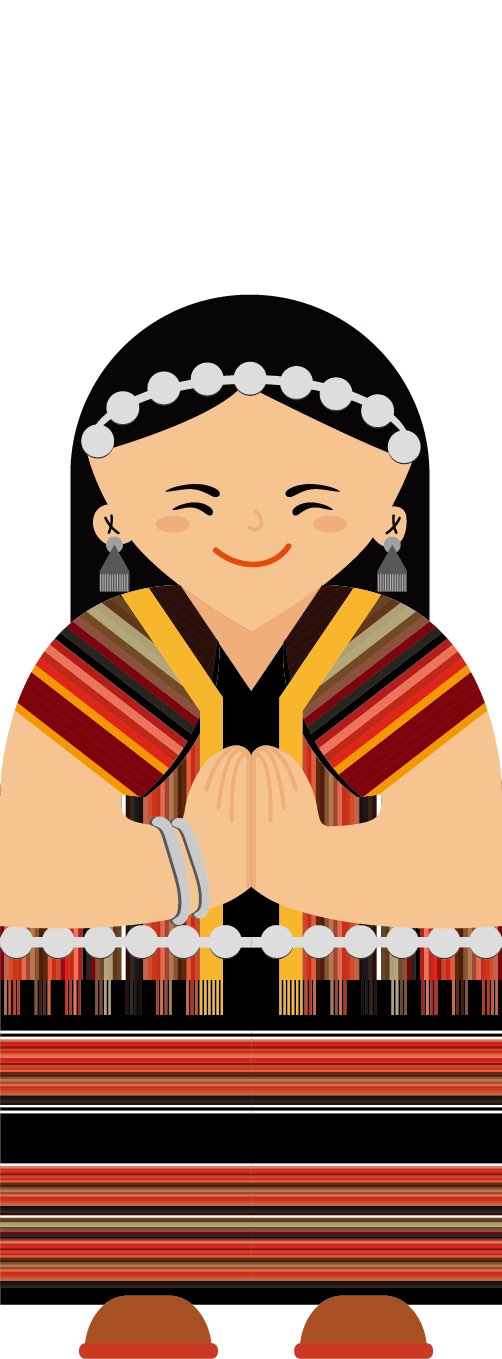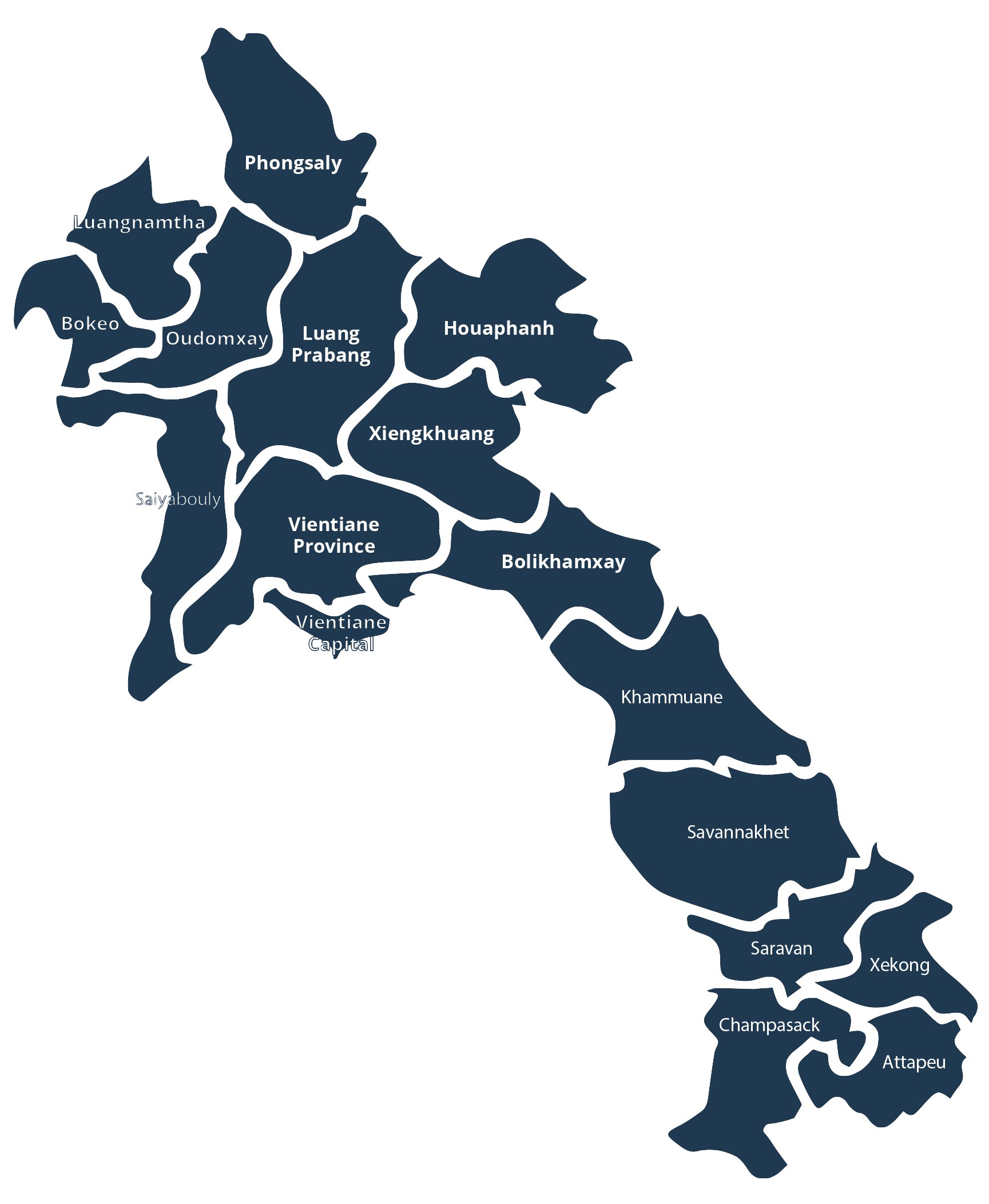

The Katu people have live in Laos for many centuries, but their exact origins are relatively unknown. The historical background and origin of this ethnic group is similar to those of other members of the Mon-Khmer language group. Many researchers
believe that the Katu migrated from southeast India and southeast parts of China. In these regions, there are still people who speak Mon-Khmer languages such as the Moondah and Koln people
Presently, the majority of Katu live in the southern provinces of Laos such as Kaleum, Darkcheung and Thataeng districts of Sekong province; Laongam districts of Salavan province and Paksong and Bachiengchalernsook of Champasak province. In addition,
Katu ethnic people also live in Vietnam in Quang Nam, Danang, and Theua Thian Hue provinces.
The total population of Katu people living in Laos is 17,024 people ,of which 8,653 are females. The Katu share 0.4% of the country total population, according to the second population census 1995.
Katu have customs and beliefs that are similar to other members of the Mon-Khmer group. They believe in the spiritual mind and soul as well as spirits that they call in their language the “Yung and Brao”. There are many spirits, some which are good and considered helpful, and some that are evil and feared. One of the most important is the spirit of rice.
Like other groups in Laos, the Katu live in a society tightly controlled by custom and traditions that have been handed down for generations. They believe sacred things surround them that contain good and evil. These things protect and take care of them but may cause harm as well. If the people pray and worship properly, they will be protected from misfortune. Also if they worship and respect the evil spirits, the Katu believe misfortune can be turned into fortune.
Therefore, every year the Katu will have large feasts and ritual ceremonies to beg for happiness a peaceful life as well as for good production in farming and hunting. The major feast celebrates the rice spirit called in Katu language the Ah Yah. In addition, feasts are held before planting and harvesting rice. In addition, they have other feasts and ritual ceremonies. They traditionally offered chickens, pigs, or buffaloes to the spirits as a sacrifice plus and large meals for guests during feasting and rituals.
In regards to succession, the Katu community follows a patrilineal lineage. A clan is of great importance, even more than an individual family, only a son can lead the clan and receive inheritance. Every person in each clan must respect and implement spiritual traditions of the clan, and every clan member had the responsibility to help others in various activities, particularly in their customs, traditional rites, and religious beliefs. Traditionally, the Katu have restrictions on cross-marriage between clans. If a man in “A clan”. Marries a woman in “B clan”, man in “B Clan” cannot marry a woman in “ a clan” The marriage takes place when the groom pays d dowry of one to twenty buffaloes to the bride‘s parents. This figure depends on economics status of the couple. Birth traditionally takes place in a separate place prepared by the husband. This place can be an area under the house or on a balcony attached to the house. Also, a small hut may be built near the village. It is important that pregnant mothers do not give birth in the house.
During birth, there is usually an experienced woman or female relative to assist in the birthing process. After three days have passed ytafter giving birth, the mother can return to the house with her infant. In regards to death and funerals, there are traditions that are followed depending on the age and cause of death. In addition, the social status and economic status of the deceased’s family plays a role in the funeral rites. Generally, Katu bury their dead. However, if a person died an unnatural death such as by a tiger or violence, the village was abandoned and all animals were put to death. After a period of around six months of living in the forest, a new village could be built in completely new area.
The majority of Katu live in remote mountainous areas, far from public infrastructure. They practice mainly slash and burn cultivation of rice, and grow vegetables and root crops for their household consumption. Katu men are skilled consumption. Katu men are skilled hunters also. Generally, their livelihood is very tied-in with nature, with their tools and technology production primitive. Animal husbandry is an activity that Katu have practiced for centuries. The animals are raised mainly for ritual ceremonies and can also be used for wedding dowries. Buffaloes are of special importance for this, and pigs and chickens are next. Katu women are skillful in weaving cotton to make clothes, and the men are skillful in handicraft such as carving.
The Katu traditionally prefer to place their simple house of bamboo and wood in a circle, having a Salakwan located in the center of the village. The salakwan is for receiving guests and ritual ceremonies and feasts. One also must be cautious and observe whether there is fresh tree branch by the village gate before entering Katu village. If there is a branch it is forbidden for a villager to leave the village and for an outsider to enter the village. Also, if a fresh tree branch is forbidden for a villager to leave the village and for an outsider to enter the village. Also, if a fresh tree branch is hanging on the wall of a house, if means entering their house is prohibited. It is also prohibited to sit and lead on a column of house. A visitor must use the special door as entry and exit, not the regular family door. The tradition of receiving a guest is to provide a tobacco pipe for the guest to smoke, which is called a Korkder.
Traditionally men used to wear the traditional loincloth and left their upper body naked, but now most Katu wear modern clothing bought in local markets. The Katu women have preserved their traditional dress better than the men have. These traditional costumes can often be seen during various feasts and ritual ceremonies. These consist of long dresses that cover the breasts down to the knees. Horizontal stripes red and yellow stripes cross across the black background.
Traditionally, the Katu filed their teeth, but that is not practiced much now. They were also skilled at tattooing their bodies, but this custom is slowly dying out also.
The Katu refer to themselves also as the “Katu” and other ethnic groups also call them “Katu” as well, and this is the name they generally prefer. The Katu group is also composed of many smaller branches such as the Trew, Darkkung, Utrna, Asarn, and Pheuang groups. The Katu language is classified as a member of the Mon Khmer language group and is member of the Katu language branch. They do not have a written language or alphabet.
Source: ປື້ມບັນດາຊົນເຜົາໃນ ສປປ ລາວ
Copyright © 2025. Her Works